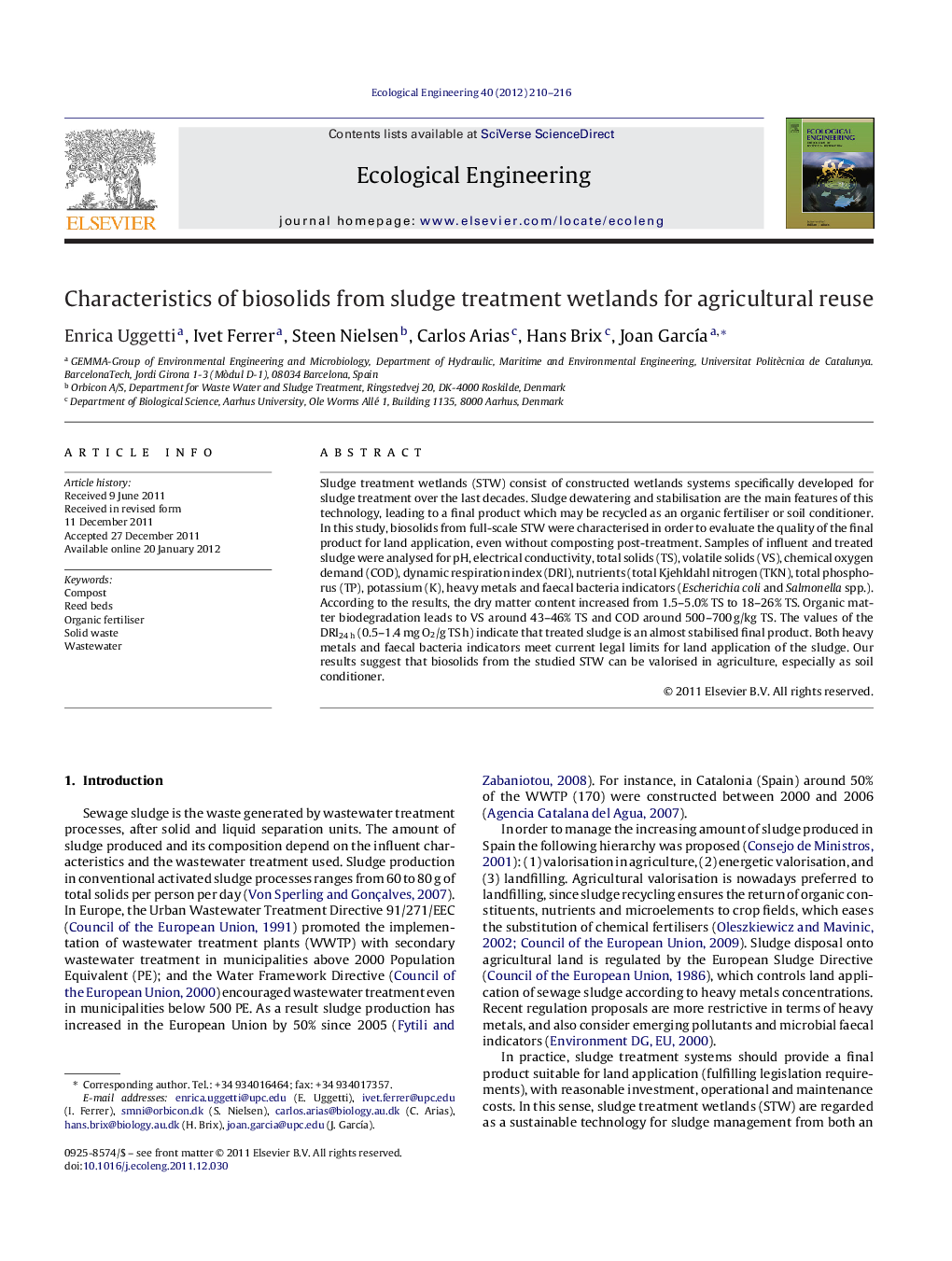| Article ID | Journal | Published Year | Pages | File Type |
|---|---|---|---|---|
| 4389968 | Ecological Engineering | 2012 | 7 Pages |
Sludge treatment wetlands (STW) consist of constructed wetlands systems specifically developed for sludge treatment over the last decades. Sludge dewatering and stabilisation are the main features of this technology, leading to a final product which may be recycled as an organic fertiliser or soil conditioner. In this study, biosolids from full-scale STW were characterised in order to evaluate the quality of the final product for land application, even without composting post-treatment. Samples of influent and treated sludge were analysed for pH, electrical conductivity, total solids (TS), volatile solids (VS), chemical oxygen demand (COD), dynamic respiration index (DRI), nutrients (total Kjehldahl nitrogen (TKN), total phosphorus (TP), potassium (K), heavy metals and faecal bacteria indicators (Escherichia coli and Salmonella spp.). According to the results, the dry matter content increased from 1.5–5.0% TS to 18–26% TS. Organic matter biodegradation leads to VS around 43–46% TS and COD around 500–700 g/kg TS. The values of the DRI24 h (0.5–1.4 mg O2/g TS h) indicate that treated sludge is an almost stabilised final product. Both heavy metals and faecal bacteria indicators meet current legal limits for land application of the sludge. Our results suggest that biosolids from the studied STW can be valorised in agriculture, especially as soil conditioner.
